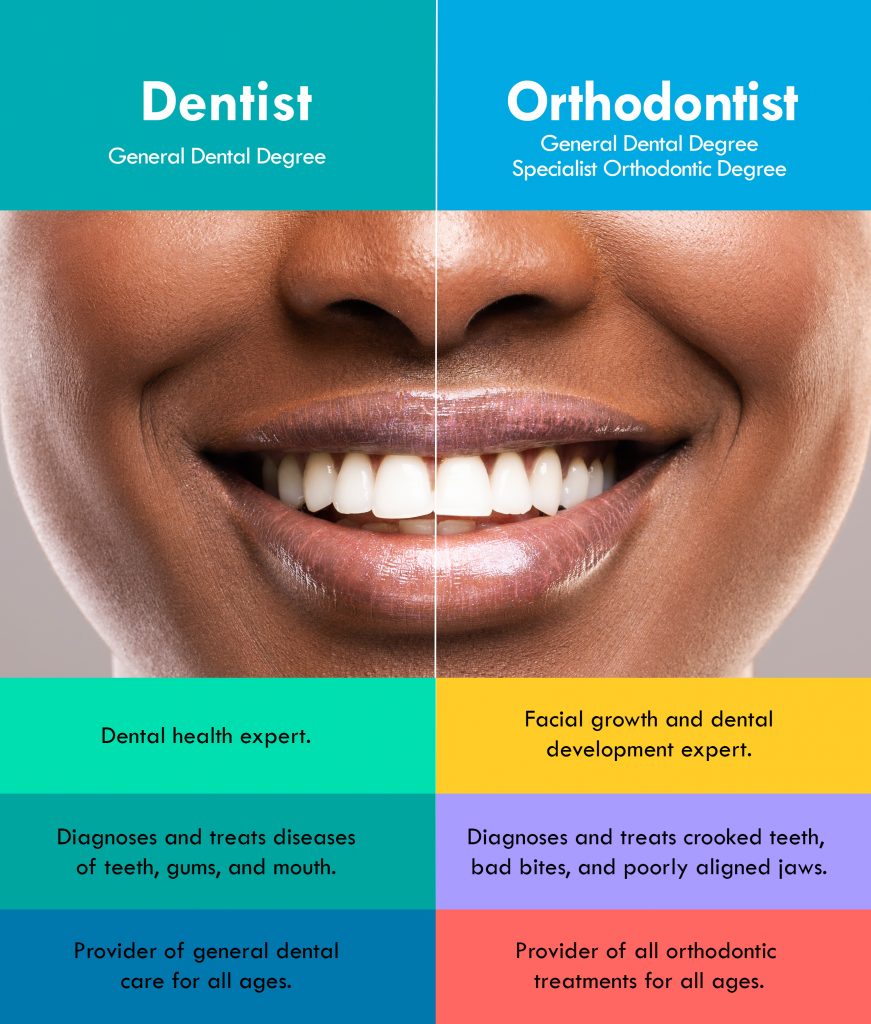How All Star Family Orthodontics can Save You Time, Stress, and Money.
Table of ContentsFacts About All Star Family Orthodontics RevealedIndicators on All Star Family Orthodontics You Need To KnowSee This Report on All Star Family OrthodonticsAbout All Star Family OrthodonticsSee This Report on All Star Family Orthodontics

In addition, we offer adjustable therapy schedules, flexible payment choices and an enjoyable, delightful experience.
An orthodontist is a dental expert trained to diagnose, prevent, and deal with teeth and jaw abnormalities. Orthodontists work with individuals of all ages, from children to grownups.
Malocclusion, or misaligned teeth, can lead to dental issues, consisting of dental cavity, gum illness, and tough or uncomfortable eating. Yet not everyone is born with straight teeth. If you have a poor bite or large spaces in between your teeth, you might wish to seek advice from a dental expert specializing in orthodontic care.
All Star Family Orthodontics Can Be Fun For Everyone
(Image Credit Score: DigitalVision/Getty Images) Orthodontists use fixed and detachable oral devices, like dental braces, retainers, and bands, to change the placement of teeth in your mouth. Orthodontic treatment is for oral abnormalities, consisting of: Jagged teethBite troubles, like an overbite or an underbiteCrowded teeth or teeth that are also much apartJaw misalignmentThe objective of orthodontic treatment is to improve your bite.
While you may think of orthodontists as primarily for children or teens who require braces, they can deal with oral problems at any type of age. Orthodontists go to college, oral school, and orthodontic school.
, yet not all dental experts are orthodontists. They concentrate on 2 locations: Exactly how to appropriately and safely move teeth How to properly guide growth in the teeth, jaw, and faceOnce an orthodontist has completed training, they have the alternative to come to be board licensed.
Things about All Star Family Orthodontics
Misalignment, or malocclusion, is one of the most typical factor people see an orthodontist. It is genetic and is the outcome of size differences in between the top and lower jaw or between the jaw and teeth. Malocclusion leads to tooth overcrowding, an askew jaw, or uneven bite patterns. Malocclusion is usually treated with: Your orthodontist connects steel, ceramic, or plastic square bonds to your teeth.
If you have only small malocclusion, you might anonymous have the ability to make use of clear dental braces, called aligners, instead of standard braces. Some people need a headgear to help relocate teeth right into line with pressure from outside the mouth. After dental braces or aligners, you'll need to wear a retainer. A retainer is a custom-made tool that maintains your teeth in place.

You may require to see an orthodontist if you have: Crowding or not enough space for every one of your teethOverbite, when your upper teeth come your bottom teethUnderbite, when your bottom teeth are as well much forwardSpacing or problems with gapsCrossbite, which is when your top teeth fit behind your bottom teeth when your mouth is closedOpen bite or an upright space between your front bottom and top teethMisplaced midline, when the center of your bottom and top teeth do not align Fixing an oral malocclusion can: Make attacking, eating, and speaking easierImprove the proportion of our face and your overall appearanceEase discomfort from temporomandibular joint problemsDifferent your teeth and make them much easier to cleanse, aiding protect against dental cavity or cavities It's typically a dental professional that initially notices misaligned teeth throughout a routine exam.
All Star Family Orthodontics for Dummies
Throughout your initial orthodontic consultation, you'll likely have: An oral examPhotos taken of your face and smileDental X-raysPanoramic (360 degree) X-rays of your face and headImpressions to create mold and mildews of your teethThese tests will certainly help your orthodontist understand how to continue with your therapy. An orthodontist is a dental expert who's had training to treat your teeth and jaw.
Orthodontists are dental experts yet not all dentists are orthodontists. Orthodontists are focused on your bite, or the method your teeth fit with each other, and the straightness of your teeth.

By meticulously evaluating these components, the orthodontist can pinpoint any type of misalignments, crowding, spacing problems, or jaw discrepancies. Once a clear photo is established, the orthodontist will review personalized treatment choices.
The Ultimate Guide To All Star Family Orthodontics
, orthodontists have a diverse toolkit at their disposal. These reliable dental braces utilize a system of brackets adhered to the teeth and linked by cables.
Clear aligners, like Invisalign, are a prominent option for patients looking for a more very discreet therapy choice. These removable trays are custom-made to gradually move the teeth's position. Headgear may be used combined with braces or aligners to apply additional targeted forces, particularly for dealing with jaw discrepancies. In cases of slim jaws, palatal expanders can be used to create area for appropriate tooth positioning.